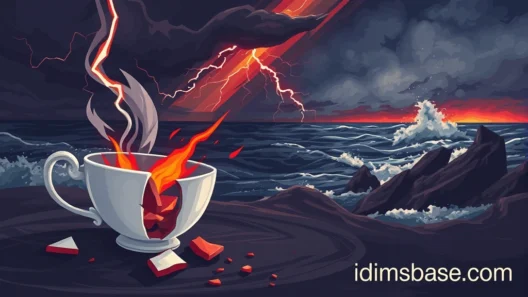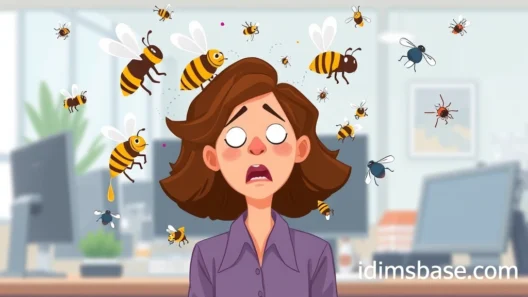Ever tried to describe a pain that just wouldn't fit into words? You know, the kind that makes you gasp or clench your teeth? Sometimes, "ouch" just doesn't cut it, does it? That's where metaphors come in! They're like little linguistic superpowers that help us paint vivid pictures of our feelings, even the tough ones. And when it comes to pain, finding the right words can be incredibly validating, whether you're trying to explain it to a doctor, a loved one, or even just understand it yourself.
So, let's dive into the fascinating world of metaphors for pain! We've gathered 38 powerful ways to describe that unwelcome sensation, helping you articulate what often feels inexpressible. Get ready to explore how language can truly transform our understanding of discomfort.
Why Metaphors for Pain Matter
Why bother with metaphors when a simple "it hurts" seems to do the trick? Well, metaphors do so much more than just describe. They:
- Enhance Communication: They help others truly grasp the intensity and nature of your pain. "It's a burning fire" is far more impactful than just "it hurts a lot."
- Provide Emotional Release: Sometimes, finding the perfect metaphor can be a cathartic experience, helping you process difficult sensations.
- Offer New Perspectives: They can help you think about your pain in a different way, which can be surprisingly empowering.
- Aid in Diagnosis: For healthcare professionals, a detailed metaphorical description can offer valuable clues about the type and source of pain.
Ready to expand your pain vocabulary? Let's go!
38 Powerful Metaphors for Pain
Here are 38 unique and evocative metaphors to describe various types of pain. See which ones resonate with you!

- A gnawing ache: Like a persistent, dull hunger.
- A searing flame: Intense, burning, and immediate.
- A dull throb: Rhythmic, heavy, and constant.
- A sharp stab: Sudden, precise, and piercing.
- A crushing weight: Heavy, oppressive, and restricting.
- A relentless drumbeat: Monotonous, inescapable, and pounding.
- A vise grip: Tight, squeezing, and constricting.
- A twisting knot: Deep, internal, and agonizing.
- A swarm of bees: Prickly, buzzing, and irritating.
- A bolt of lightning: Sudden, shocking, and electrifying.
- A hot poker: Intense, localized, and burning.
- A splintered glass: Sharp, fragmented, and cutting.
- A drilling auger: Deep, boring, and penetrating.
- A buzzing wasp: Annoying, stinging, and persistent.
- A grinding millstone: Slow, heavy, and destructive.
- A tearing rip: Sharp, sudden, and rending.
- An icy claw: Freezing, sharp, and gripping.
- A throbbing toothache: Rhythmic, deep, and distracting.
- A hammering fist: Repetitive, blunt, and forceful.
- A stretching elastic band: Tight, pulling, and uncomfortable.
- A pinching vice: Squeezing, localized, and sharp.
- A crawling sensation: Unsettling, itchy, and irritating.
- A blinding flash: Sudden, overwhelming, and disorienting.
- A suffocating blanket: Oppressive, heavy, and breathless.
- A jolt of electricity: Sudden, shocking, and involuntary.
- A crumbling wall: Breaking down, unstable, and weakening.
- A biting wind: Cold, sharp, and penetrating.
- A leaking faucet: Persistent, annoying, and slowly worsening.
- A scratching cat: Sharp, irritating, and superficial.
- A squeezing band: Constricting, tight, and uncomfortable.
- A dragging chain: Heavy, restrictive, and tiring.
- A bursting balloon: Sudden, intense, and relieving (after the burst!).
- A creeping vine: Slowly spreading, insidious, and entangling.
- A churning stomach: Nauseating, internal, and unsettling.
- A cracking whip: Sharp, sudden, and stinging.
- A throbbing headache: Pulsating, intense, and all-consuming.
- A dull ache, like a stone in my shoe: Persistent, annoying, and always there.
- A raw nerve: Exposed, sensitive, and easily triggered.
| Metaphor Category | Example Metaphors | Associated Feeling |
|---|---|---|
| Intense/Sharp | A searing flame, A sharp stab, A bolt of lightning | Burning, Piercing, Sudden |
| Dull/Achy | A gnawing ache, A dull throb, A grinding millstone | Persistent, Heavy, Slow |
| Constricting | A vise grip, A crushing weight, A squeezing band | Tight, Oppressive, Restrictive |
| Spreading/Creeping | A creeping vine, A crawling sensation, A leaking faucet | Insidious, Annoying, Worsening |
| Pulsating/Rhythmic | A relentless drumbeat, A throbbing toothache, A hammering fist | Repetitive, Pounding, Distracting |
Frequently Asked Questions (FAQs)
Q1: What's the difference between a metaphor and a simile?

A great question! A metaphor directly states that one thing is another (e.g., "Pain is a fire"). A simile compares two things using "like" or "as" (e.g., "Pain is like a fire"). Both are fantastic for vivid descriptions!
Q2: Can using metaphors actually help manage pain?
While metaphors aren't a cure, they can absolutely help with pain management! By externalizing and describing the pain, you might feel more in control. It can also help you communicate more effectively with healthcare providers, leading to better treatment strategies. Plus, sometimes just finding the right words can bring a sense of relief.
Q3: Are these metaphors only for physical pain?

Not at all! Many of these metaphors can be adapted to describe emotional or psychological pain too. For example, "a crushing weight" could describe grief, and "a gnawing ache" could represent anxiety. Language is wonderfully flexible!
Q4: How can I encourage someone to use metaphors to describe their pain?
You can start by asking open-ended questions like, "What does your pain feel like?" or "If your pain were an object or a creature, what would it be?" Offer a few examples if they seem stuck. The goal is to make them feel comfortable exploring their sensations verbally.
Q5: Is there a "right" or "wrong" metaphor for pain?
Absolutely not! The best metaphor is the one that best describes your unique experience. Pain is incredibly personal, and your words should reflect that. Feel free to mix and match, or even invent your own!
Key Takeaways
- Metaphors are powerful tools for describing pain, making the inexpressible more understandable.
- They enhance communication, offer emotional release, provide new perspectives, and can aid in diagnosis.
- There's a wide range of metaphors to describe different types, intensities, and qualities of pain.
- Using metaphors can contribute to a deeper understanding and potentially better management of pain, both physical and emotional.
- The "best" metaphor is always the one that resonates most with your personal experience.
We hope this exploration of metaphors for pain has been helpful and perhaps even a little empowering. Language is truly a remarkable thing, isn't it? It gives us the power to articulate the most complex of human experiences. So, the next time pain comes knocking, maybe you'll have a few new words in your arsenal to describe it. What metaphors do you use to describe pain? We'd love to hear your thoughts!





